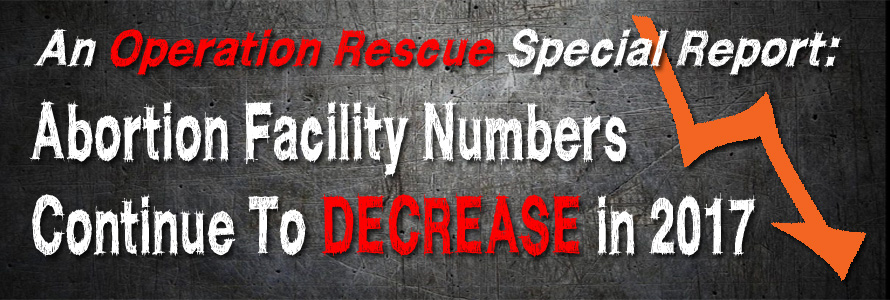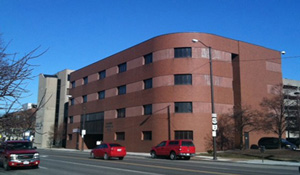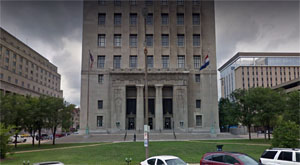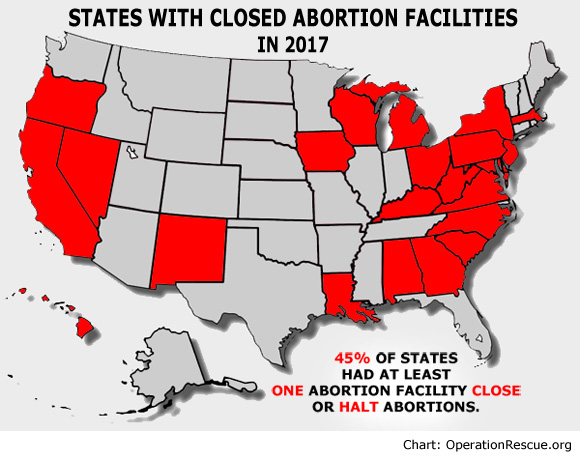
An Operation Rescue Special Investigative Report
By Cheryl Sullenger
Washington, DC — In a year that abortion businesses attempted to expand in America, the actual number of abortion facilities decreased by 27 clinics over 2016 totals.
Closures far outpaced newly opened abortion facilities in 2017. In all, 49 abortion facilities — 35 surgical and 14 medication only clinics — closed or halted abortion services. Only eight new surgical abortion facilities were opened, along with eleven new medication abortion facilities.
There was also some movement between categories. Fourteen surgical abortion facilities now only conduct medication abortions, while five medication abortion facilities added surgical abortions.
These encouraging statistics and more were verified through an annual survey of abortion facilities conducted by Operation Rescue staff, this year with the assistance of Abortion Free New Mexico.
“Operation Rescue’s annual surveys provide the most complete and accurate picture of abortion facilities available — straight from the horse’s mouth,” said Troy Newman, President of Operation Rescue.
Methods
Each year, Operation Rescue surveys each abortion facility in the U.S. using a number of investigative methods. Each facility was directly contacted. Abortion facility personnel voluntarily verified that abortions were available, and shared information on abortion pricing and wait times, although they were not aware the information was going to Operation Rescue.
By the Numbers
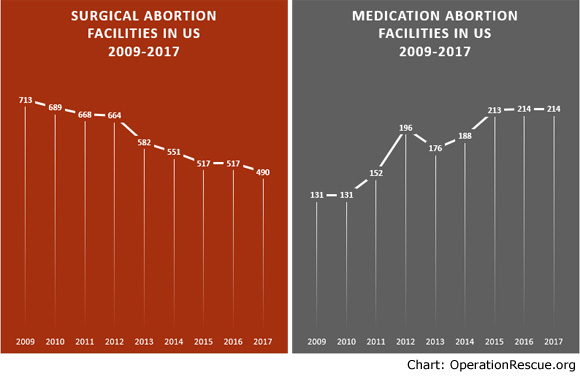
In 2017, there are 704 abortion facilities remaining in the U.S. Of these, 490 offer surgical abortions, often along with medication abortions. There are 214 facilities that offer only medication abortions.
Forty-five percent of all states had at least one abortion facility that closed or halted all abortion services this year.
Surgical abortion clinics decreased in number by 26% since 2009, the first year Operation Rescue began keeping records. Overall, there has been a 17% decrease in the total number of abortion facilities in America since 2009.
Since 1991, when there were 2,176 active surgical abortion facilities, only 23% of that number of surgical clinics are operating today.
“Pill Mills”
Abortion facilities that offer only abortion-inducing drugs, also known by pro-life activists as “pill mills,” held steady at the same number as in 2016. Closures balanced evenly with new opens and clinics that dropped surgical abortions in favor of the abortion pills.
Medication abortions involve a two-drug cocktail comprised of Mifepristone, also known as the RU486 Abortion Pill, and Misoprostol, a drug that causes strong and often unpredictable uterine contractions. A very small number of facilities provide medication abortions via injection of Methotraxate, a chemotherapy drug that causes abortions, albeit much less efficiently than the Abortion Pill cocktail.
“Abortion facilities that provide only abortion drugs comprise an increasing slice of an ever-shrinking piece of the abortion pie,” said Newman. “While surgical facilities are closing at an impressive rate, pill mills are holding their own.

Planned Parenthood

Planned Parenthood reduced its number of abortion facilities by consolidating services into fewer locations. In 2016, Planned Parenthood operated 354 facilities that conducted abortions. Today, there are a total of 347 Planned Parenthood facilities that offer abortions. Of those, 160 are surgical abortion facilities, and 187 provide only medication abortions.
Not counting Planned Parenthood’s vast – but shrinking – network of referral clinics that do not offer abortions, Planned Parenthood facilities now account for 49% of all abortion facilities in the U.S. Nevertheless, they only account for 30.6% of all abortions done in the U.S.
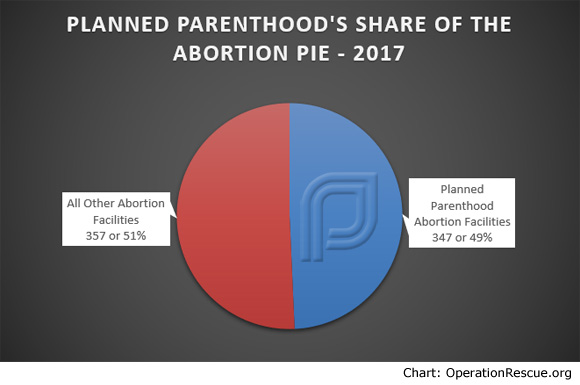
Reopened
A handful of facilities that were closed by their states that reopened in 2017. For example, in Texas, of the 20 abortion facilities were forced to close in 2013 for failure to comply with new abortion safety regulations, three reopened this year after the U.S. Supreme Court that negated parts of that safety law. However, 17 of the original 20 abortion clinics that shut down remain closed.
Why Abortion Facilities Close
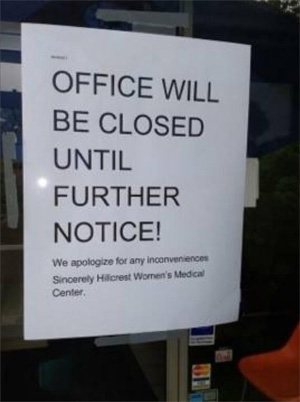 One reason abortion clinics are closing is due to a decreased demand for abortions. There appears to be a correlation between clinics closing and a decrease in abortion numbers. According to the CDC, abortion numbers have been dropping steadily since 2005. The CDC’s 2014 Abortion Surveillance report indicated that from 2005 to 2014, among 48 areas that reported every year during this period, the total number of reported abortions decreased 21%, the abortion rate decreased 22%, and the abortion ratio decreased 21%. A comparable decrease of in abortion clinic numbers — 17% — has been tracked by Operation Rescue from 2009-2017.
One reason abortion clinics are closing is due to a decreased demand for abortions. There appears to be a correlation between clinics closing and a decrease in abortion numbers. According to the CDC, abortion numbers have been dropping steadily since 2005. The CDC’s 2014 Abortion Surveillance report indicated that from 2005 to 2014, among 48 areas that reported every year during this period, the total number of reported abortions decreased 21%, the abortion rate decreased 22%, and the abortion ratio decreased 21%. A comparable decrease of in abortion clinic numbers — 17% — has been tracked by Operation Rescue from 2009-2017.
Some facilities have not been able to compete in an ever-shrinking abortion market and have been forced to downside or shut down. At the same time, when abortion facilities close, abortion numbers decrease even more.
When abortion clinics close, lives are saved!
Other reasons for clinic closures include:
• Successful pro-life activism.
• Failure of facilities to comply with licensing and safety regulations.
• Aging abortionists retiring or passing away.
• New state laws.
Notable Closures
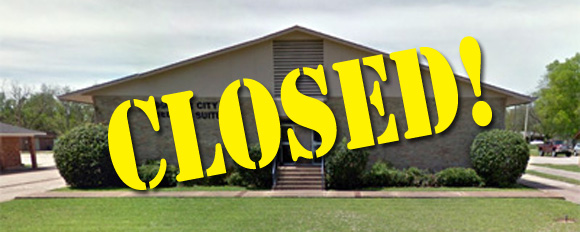
Some of the notable clinic closures that took place in 2017 include:
• Germantown Reproductive Health Services and Prince George’s Reproductive Health Services in Maryland: The Germantown facility employed late-term abortionist LeRoy Carhart, and was one of the nation’s few abortion centers that would abort babies throughout all nine months of pregnancy. When the Maryland Coalition for Life purchased the building earlier this year, the deal also included the closure of the Prince George’s facility, which was operated by the same owners. That was two closures for the price of one!
• The Office of Robert Santella in San Diego, CA: This abortionist was forced to surrender his medical license after the California Medical Board determined he engaged in unprofessional conduct during a demonic rant outside another San Diego facility where he worked. The incident, which included Santella threatening a pro-life activist with a pair of surgical scissors, was caught on video, which went viral on YouTube.com.
• Planned Parenthood of Metro DC in Silver Spring, MD: A pro-life campaign to close this facility succeeded when the Planned Parenthood’s landlord refused to renew its lease. Public pressure works!
• Hillcrest Women’s Medical Center, Harrisburg, PA: This facility was ordered to close by the state in June 2017, after gross violations were found during an annual licensing inspection.
• Bossier City Medical Suite, Bossier City, LA: This facility was in the middle of a lawsuit challenging abortion licensing requirements that it could not meet when it suddenly closed its doors. Pro-life activists rejoiced at the sight of a moving van outside the seed abortion facility in April.
“We rejoice that the abortion cartel is imploding and closing down. We are making progress. But they are not going down without a fight,” said Troy Newman. “We continue to work and pray that we will soon see an end to abortion in our nation. Let’s stop the killing and, in the words of President Donald Trump, make America great again!”
Coming soon! Operation Rescue’s exclusive analysis of abortion costs and wait times.

